Here are some hi-res pictures of the Commodore MAX machine (aka Ultimax or VC-10), a stripped-down game console variant of the Commodore 64 that was briefly available in 1982.
The membrane keyboard has the same layout as the C64’s.
The sticker on the bottom says “MODEL NO MAX-04”, “SERIAL NO 10816”.
On the back, there is the the power switch, the power connector (same as the C64), a 3.5 mm audio jack, a standard C64 cartridge port, the TV connector with a channel select switch, and a cassette port.
There is no AV port1, no serial port and no user port2.
There are two joystick ports, one on each side.
The back side of the keyboard.
The “325565 REV.A” board contains the following major chips, from left to right:
- MOS 6566: VIC-II video chip (variant without DRAM support)
- MOS 6510: CPU
- M58725: 2048×8 SRAM (main RAM, $0000-$07FF)
- MOS 6581: SID sound controller
- MOS 6703: PLA (chip select generator)
- 2114: 1024×4 SRAM (color RAM, $D800-$DBFF)
- MOS 6526: CIA I/O controller
There is no ROM on the board, so all code and even the character set has to come from a cartridge (max. 16 KB) – like on all game consoles from the time. The cartridge can also contain up to 32 KB of external SRAM.
-
A composite or S-Video output can be added.↩
-
Both the serial port and the user port would require CIA #2, which the MAX doesn’t have. Keyboard and joysticks are controlled by CIA #1, and the tape port is driven by the 6510 CPU’s I/O port.↩

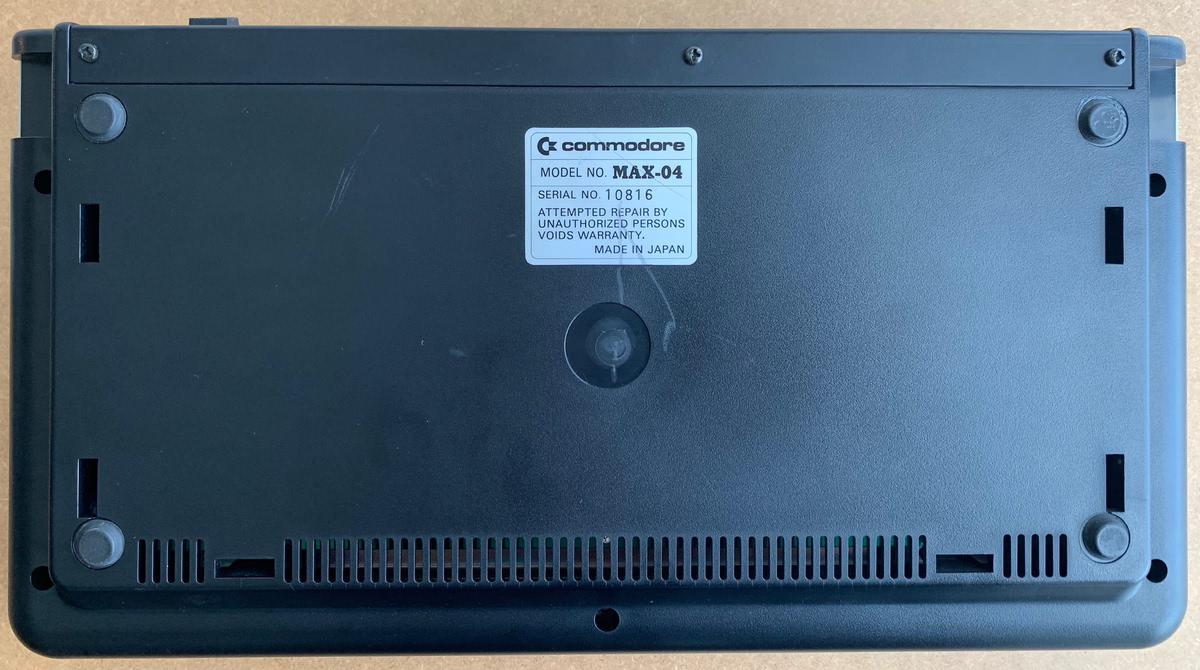

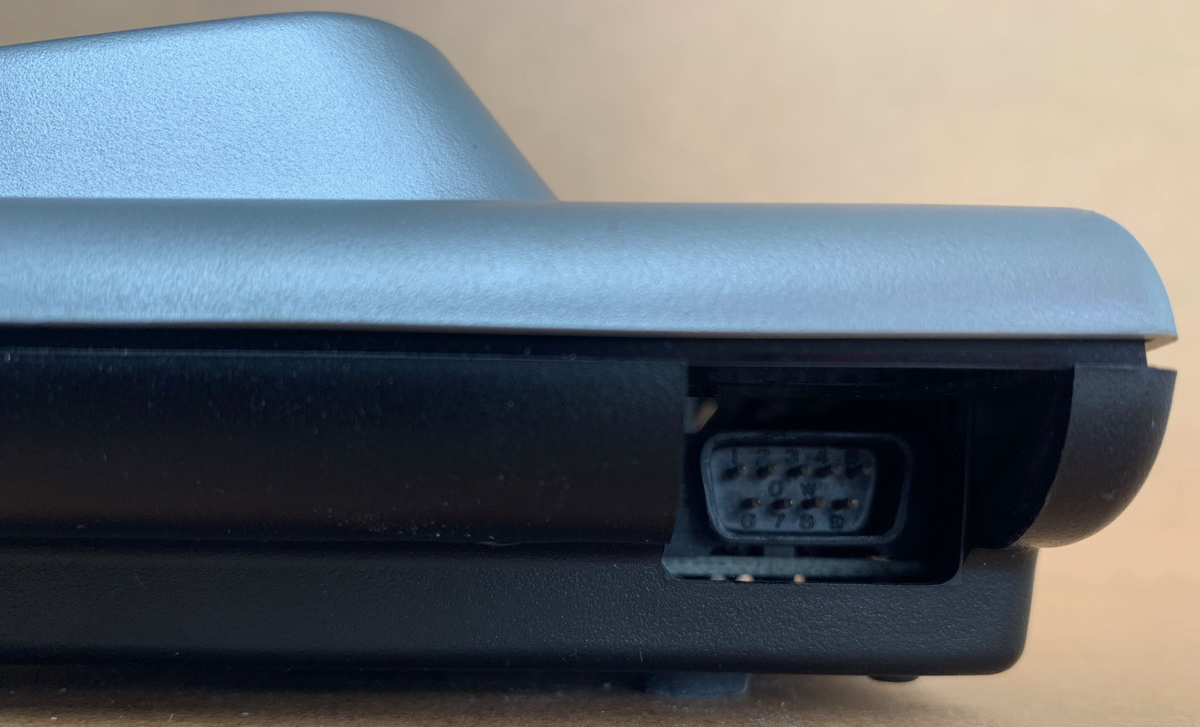
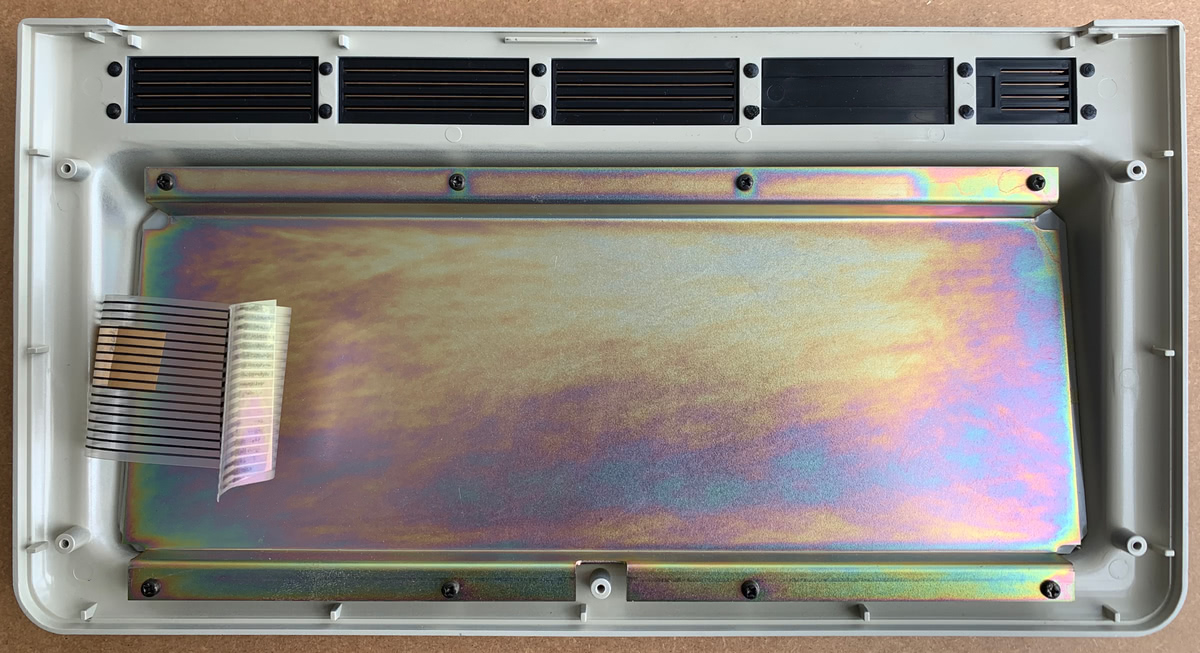
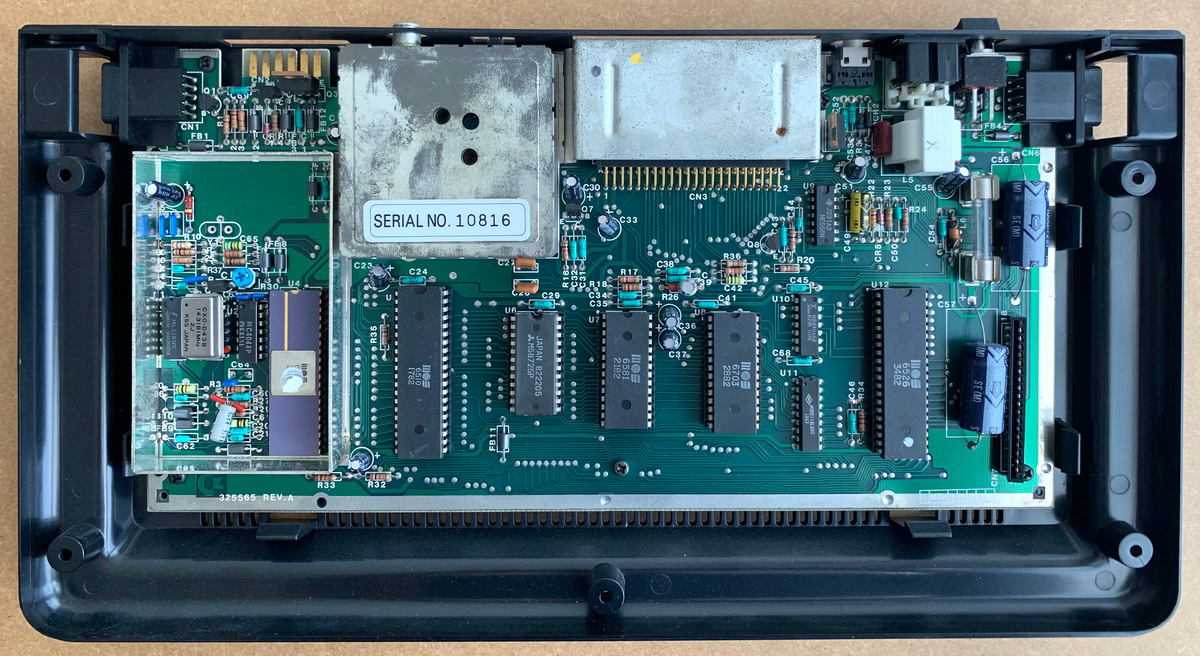
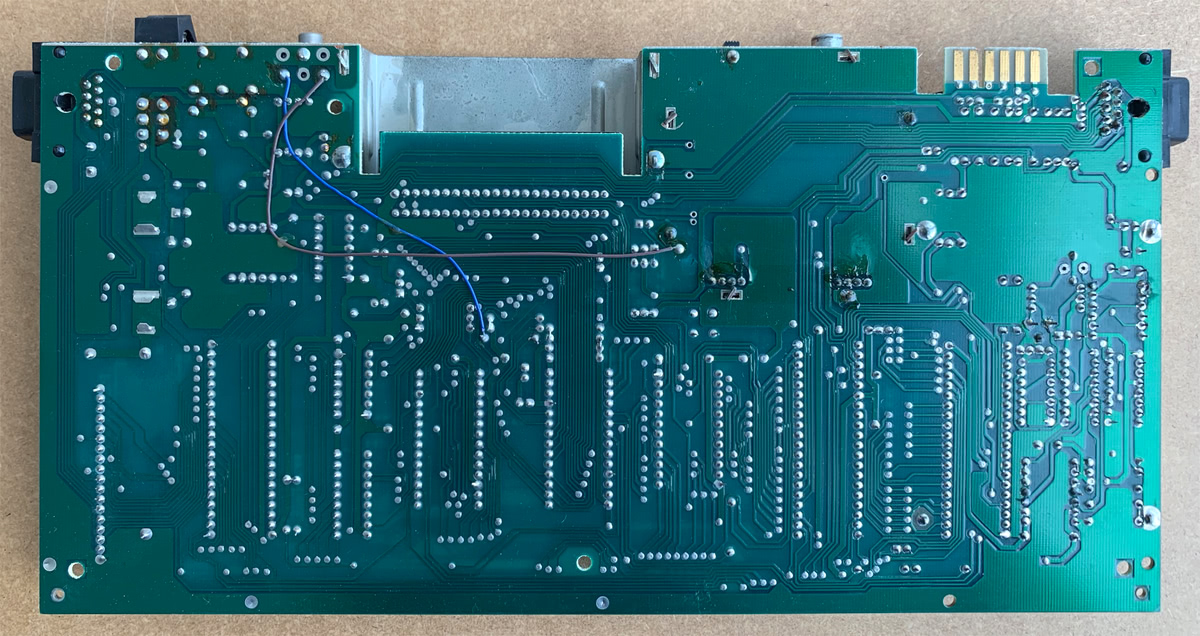
some elaborated testing of the VIC in this machine would be interesting… how its different from the early VICs in C64s. eg does the reset bit in $d016 do anything?
“There is no ROM on the board, so all code and even the character set has to come from a cartridge (max. 16 KB) – like on all game consoles from the time.”
Not quite true: the Intellivison had onboard ROM (8K, IIRC) that contained some graphics (such as the “running man” you saw so often on that machine) and a game engine that some games used. Using the game engine could save space on the cartridge, but it was slow, so it seems that games using it would generally run at only 20 FPS. To do better than this you’d have to ignore that game engine and include all your code in the cartridge.
If we are in nit-pick mode, I have to add that the Magnavox Oddysey2 / Philips Videopac G7000 did also contain a ROM with a bunch of stuff that carts could use. (Released in 1978 iirc).
The Colecovision also contains ROM, it’s even able to display a Colecovision logo if you power up the console with no cartridge inserted.
Even the first released microprocessor controlled video game console, Fairchild Channel F, has built in ROM which even contains two playable games.
My impression is that companies soon learned that having a ROM with contents that obviously were under copyright protection were the way to protect you from someone copying the hardware. This of course assumes that parts are generally available like they were for may of the video games. MAX would be another issue as you would most likely not be able to buy VIC-II chips from MOS/CSG except in small quantities and high prices as spare parts, and I doubt that anyone would go through the effort of making a VIC-II compatible chip. (As a side track, it would be an interesting though experiment re what would happen if someone made a MAX/C64 compatible computer where all parts were made by others than MOS/CSG. (You would not only have to make clones of the VIC-II and SID but also the CIA and somehow emulate the port and three state bus on the 6510. The CIA would be easy for anyone already making chips, and the 6510 could even be emulated by a 6502, parts of a 6522 (or similar) and some discreete logic)
Hello,
I was hoping to get permission to use this image: https://www.pagetable.com/docs/ultimax/board.jpg in a documentary I am creating about the Commodore 64 and the passionate community that still surrounds it today. I’d be more than happy to credit you for the image. For more details please visit iadoremy64film.com.
Many thanks!
Sure!
Just might want to know: MiSTer C64 core FPGA is available
Features
C64 and C64GS modes.
C1541 read/write/format support in raw GCR mode (*.D64, *.G64)
C1581 read/write support (*.D81)
Parallel C1541 port for faster (~20x) loading time using DolphinDOS.
External IEC through USER_IO port.
Amost all cartridge formats (*.CRT)
Direct file injection (*.PRG)
Dual SID with several degree of mixing 6581/8580 from stereo to mono.
Similar to 6581 and 8580 SID filters.
REU 16MB and GeoRAM 4MB memory expanders.
OPL2 sound expander.
Pause option when OSD is opened.
4 joysticks mode.
RS232 with VIC-1011 and UP9600 modes either internal or through USER_IO.
Loadable Kernal/C1541 ROMs.
Special reduced border mode for 16:9 display.
C128/Smart Turbo mode up to 4x.
Real-time clock
What Psu type you got with this Max?
These early Max Machines have a different Box. The later common Max Supply doesnt fit in the foam!